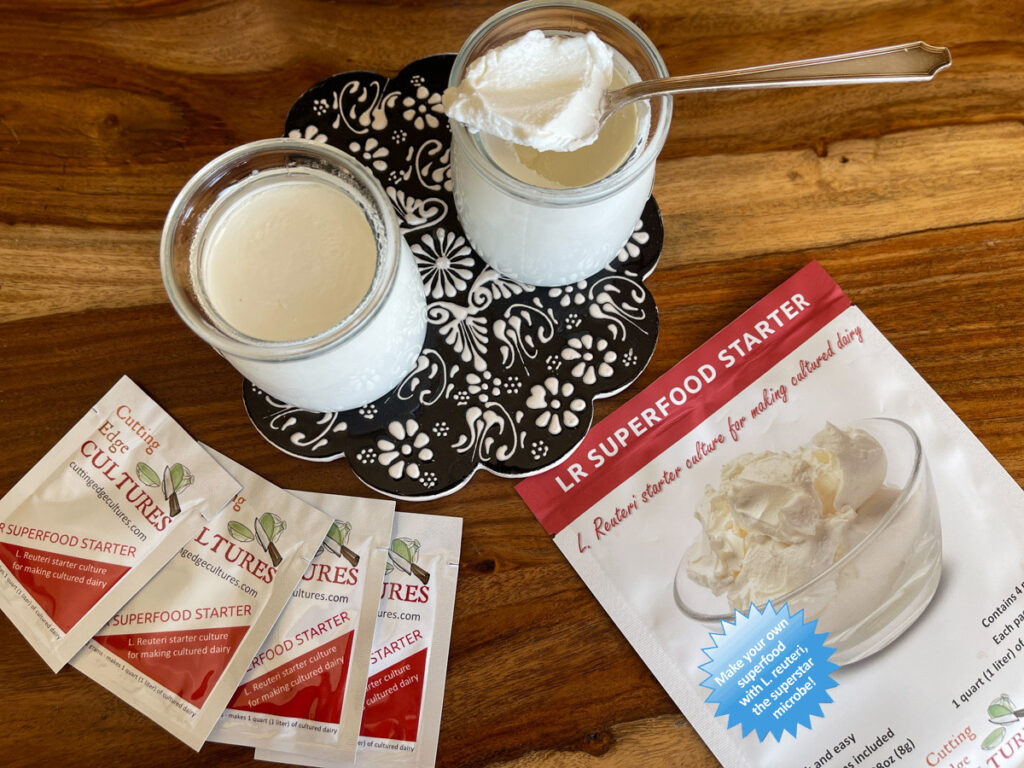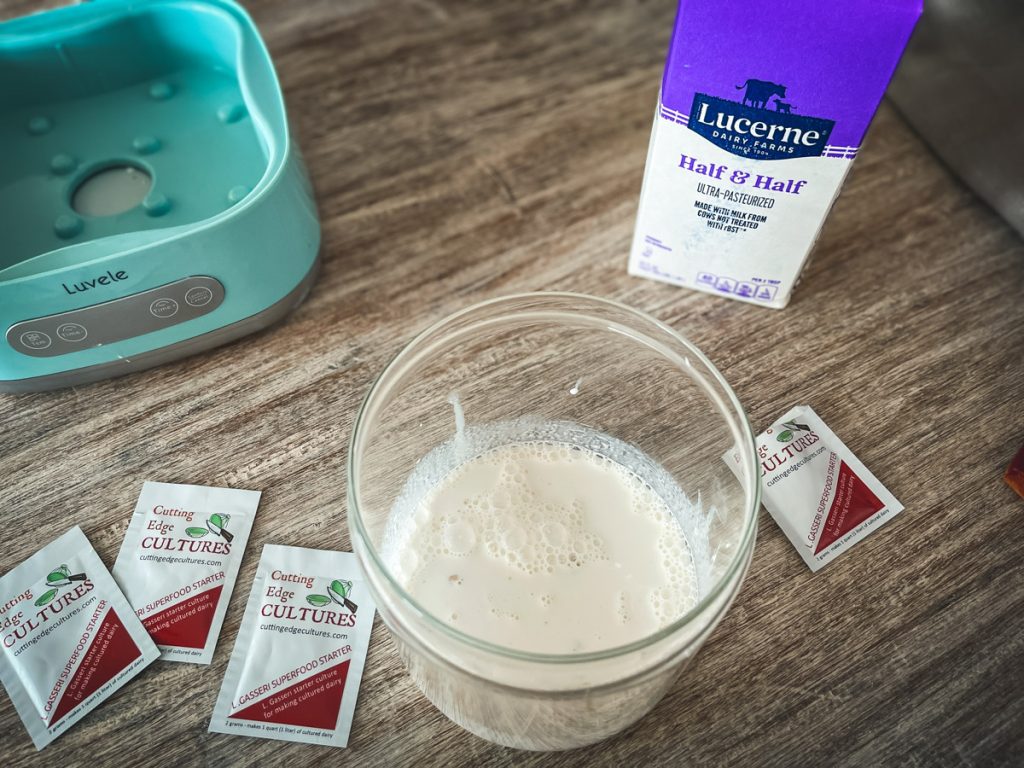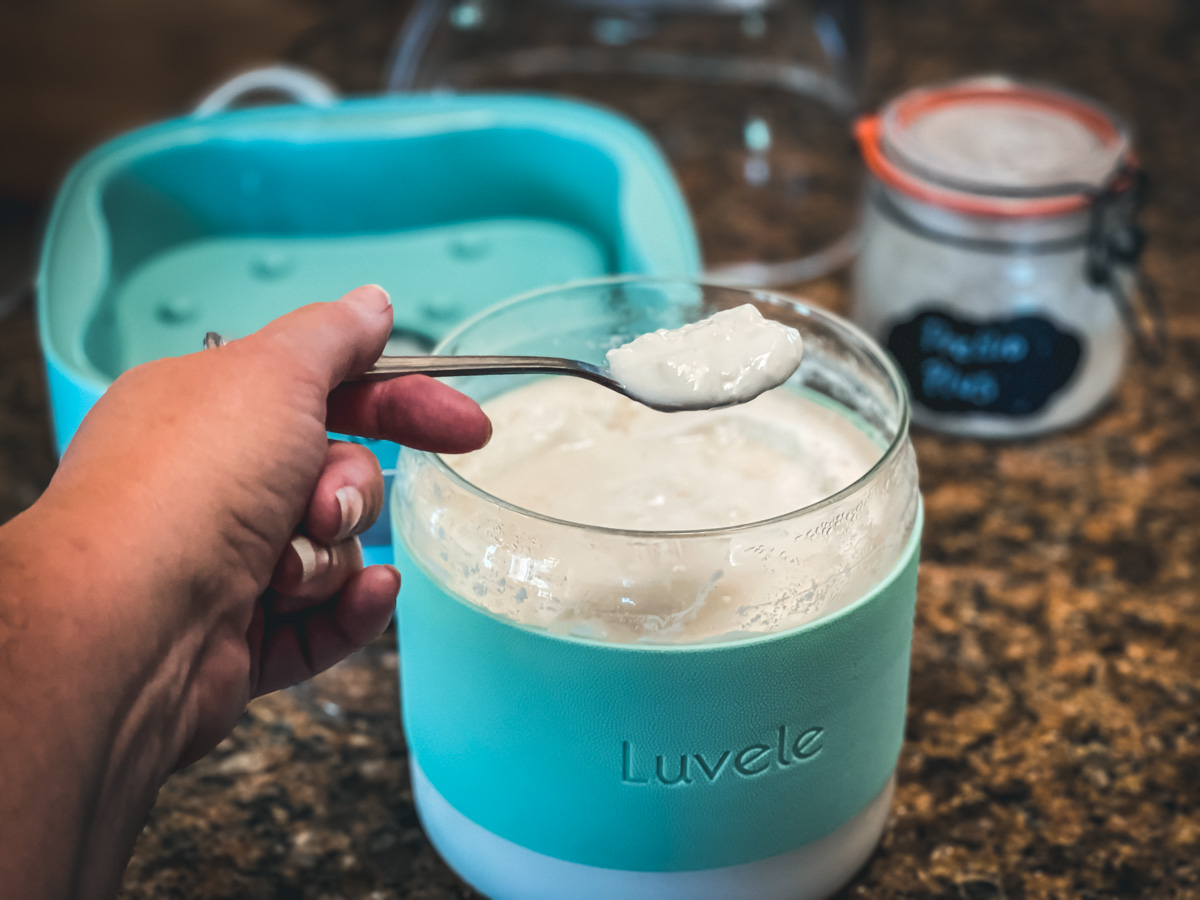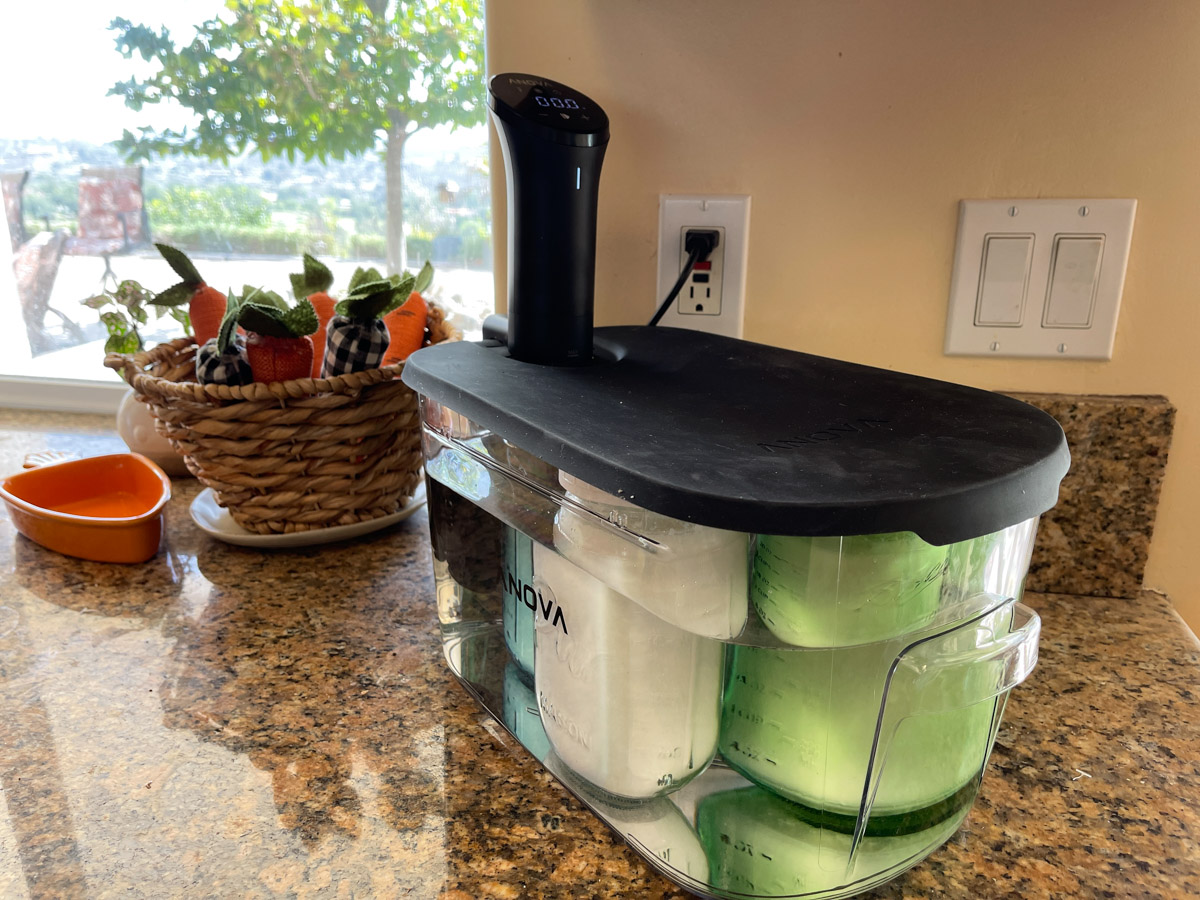
L. Reuteri and L. Gasseri Yogurt Calorie Guide
Yogurt Nutritional Counts
Milk Sugars in Yogurt
Yogurt Benefits
Yogurt is such a miracle food, and it can be made with a variety of milks—whether you prefer dairy or non-dairy. Each type of milk brings its own unique benefits and nutritional profile, so you can choose what works best for you. Fermented yogurt is so much more than just milk—it's an alchemy, transforming the milk into a powerful, probiotic-rich superfood. When the bacteria and yeasts in yogurt get to work, they break down the milk’s carbohydrates and convert them into lactic acid, leaving it almost completely free of lactose.
One of the amazing benefits of these yogurts is how easily your body can digest them. The beneficial microbes do the work of pre-digesting the yogurt, making it simple for your body to absorb and deliver the nutrients quickly to the cells that need them for repair, growth, and detoxification.
Lactic Acid and Fermentation
 Lactic Acid
Lactic Acid
Even though lactic acid has a few calories, it's minimal—just around 0.7–1% of the final product, depending on how long you ferment it. And when you ferment yogurt for 36 hours using strains like Lactobacillus reuteri and it ensures that almost all the lactose is gone, making it even easier for those who are sensitive to lactose to enjoy it. Fermentation not only preserves the milk's vitamins and minerals but also increases its nutritional value. It's like a little magic trick that boosts your digestion, strengthens your immune system, and gives you a wonderful surge of energy.
Fermentation is a Gift to Milk
I know milk can sometimes get a bad rap, especially when it’s been pasteurized and homogenized, which can strip away so many of its benefits. But when you ferment it, it’s transformed into something entirely different—something healing and nourishing. Fermentation is a gift that can turn ordinary foods into superfoods, and it’s available to all of us. Embrace the microbes and let them do their magic in your life! Making your own yogurt is a powerful way to nourish yourself, and it’s a gift that keeps on giving. Get L. Reuteri Starter
Label Confusion
 There’s a lot of confusion around the carbohydrate content listed on packages of fermented foods, and it’s easy to see why! The government requires food manufacturers to count carbohydrates “by difference.” This means they measure everything else—like water, ash, fats, and proteins—and then assume that whatever’s left must be carbohydrates. It’s a standard practice, but when it comes to fermented foods like yogurt, kefir, and others, it doesn’t tell the full story.
There’s a lot of confusion around the carbohydrate content listed on packages of fermented foods, and it’s easy to see why! The government requires food manufacturers to count carbohydrates “by difference.” This means they measure everything else—like water, ash, fats, and proteins—and then assume that whatever’s left must be carbohydrates. It’s a standard practice, but when it comes to fermented foods like yogurt, kefir, and others, it doesn’t tell the full story.
Lactose-Loving Bacteria
When we make these fermented foods, we’re inoculating the milk with beneficial lactic acid bacteria. These microbes go to work, consuming almost all the milk sugar, or lactose, and converting it into lactic acid. This lactic acid is what curdles the milk, giving that tangy taste we love. So, while the label may still show carbohydrates as if the lactose is present, the reality is that these lactose-loving bacteria have already gobbled up most of it. The carbohydrates listed are actually due to the presence of lactic acid, not lactose.
Carbohydrate Count Drops Significantly
 This is why you can enjoy up to a cup of plain yogurt, kefir, or buttermilk and only count about 1-4 grams of carbohydrates. Dr. Jack Goldberg of the Go-Diet even measured this in his own lab! Kefir, for instance, is 99% lactose-free because the bacteria consume nearly all the lactose, making it a great option for those who are lactose intolerant. If you ferment yogurt for 7-8 hours, it typically has around 4 grams of carbs per cup. But when you extend fermentation to 36 hours using strains like Lactobacillus reuteri and Lactobacillus gasseri, the carbohydrate count drops significantly—much like kefir—because these bacteria work hard to consume any remaining lactose. Kefir and L. reuteri, and L. Gasseri have about 1-0 gram of carbohydrates, thanks to the abundance of bacteria that break down the lactose completely. Get L. Gasseri Starter
This is why you can enjoy up to a cup of plain yogurt, kefir, or buttermilk and only count about 1-4 grams of carbohydrates. Dr. Jack Goldberg of the Go-Diet even measured this in his own lab! Kefir, for instance, is 99% lactose-free because the bacteria consume nearly all the lactose, making it a great option for those who are lactose intolerant. If you ferment yogurt for 7-8 hours, it typically has around 4 grams of carbs per cup. But when you extend fermentation to 36 hours using strains like Lactobacillus reuteri and Lactobacillus gasseri, the carbohydrate count drops significantly—much like kefir—because these bacteria work hard to consume any remaining lactose. Kefir and L. reuteri, and L. Gasseri have about 1-0 gram of carbohydrates, thanks to the abundance of bacteria that break down the lactose completely. Get L. Gasseri Starter
Yogurt Calories in L. reuteri And L. Gasseri
Here’s a general guideline for estimating the nutritional content of these yogurts. The calorie count may vary depending on the type of milk you use, but this serves as a reliable baseline for calculating your nutritional intake.
Listen To My Podcast
Today, we're exploring the benefits and nutritional profiles of yogurts made with Lactobacillus reuteri and Lactobacillus gasseri. We'll walk you through everything you need to know—from understanding milk sugars in yogurt to the caloric counts of various types of yogurt. Did you know that when you ferment yogurt for 36 hours, it becomes nearly lactose-free? Join us as we navigate the fascinating world of yogurt, revealing how fermentation transforms milk into a probiotic-rich superfood that’s both healing and nourishing.
Are you on the list?
Sign up today and I'll send you my free Getting Started Guide!
Each week I'll send you updates, tips, recipes, and more! You might even be a winner of my weekly giveaway! (starter cultures, memberships, and more!)
Come be a part of my cultured food family!





 I'm sorry, but I do not ship my products outside of the United States.
I'm sorry, but I do not ship my products outside of the United States.